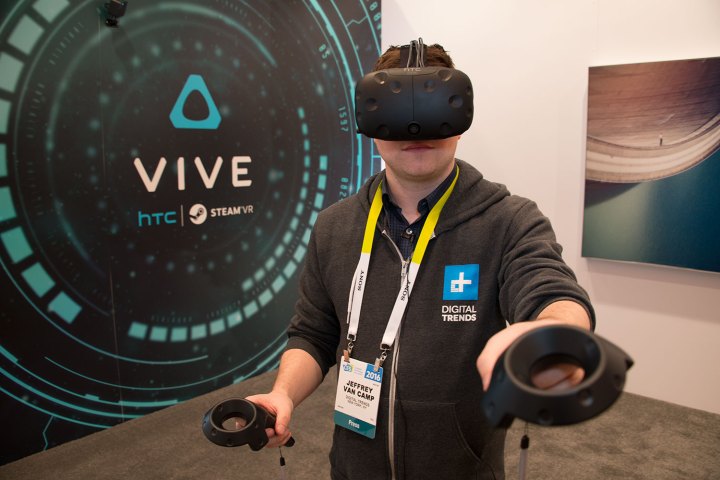
It’s no secret that the PC “market” has slumped. The latest figures from IDC say that sales in the critical fourth quarter of 2015 slumped about 10 percent year-over-year. Five years ago, in the fourth quarter of 2010, about 100 million PCs were sold. Only 72 million were shifted at the end of 2015.
That’s a big gap. But while overall sales have slumped, enthusiast hardware has done well, and appears to be an area of growth. Smaller PC builders like Origin told us so a year ago, and IDC confirmed as such in its latest sales report. The most hardcore fans are willing to spend a lot of money, and their numbers are growing.
And it’s only the beginning. This year’s CES saw the rise to prominence of a technology that is sure to spur renewed interest in the PC – Virtual Reality.
VR is being built by people who favor the PC model of (relatively) open platforms.
VR has been on the minds of techies for years, but CES 2016 marked its debut into the mainstream limelight. The retail versions of Oculus’ Rift can finally be pre-ordered, and HTC has given a date for its Vive. Even Razer’s lesser known OSVR has gained attention. 2016 marks the first year the PC faithful will be able to purchase a VR headset that’s not handicapped by the label “developer’s kit.”
That alone will spur sales of high-end hardware, and put pressure on AMD, Intel, and Nvidia to deliver even quicker components. The Rift and Vive boast a total pixel count that’s about 20 percent greater than a 1080p display, and those games must run at a 50 percent higher framerate (90 FPS rather than 60 FPS) to maintain a responsive, immersive feel. Plunging into VR means nearly doubling the load on a PC’s graphics chip, assuming everything remains the same.
It’s not just a need for faster hardware that’ll push people to upgrade their PCs. It’s also about ideals. There are five major headsets that are already, or will be, available in 2016. Three of them – Rift, Vive, and OSVR – are firmly rooted in the PC tradition. They’re built by people who favor not just computers, but also the PC model of (relatively) open platforms. There’s nothing to bar a developer from creating a VR experience that will work, to some degree, on all three of these headsets.
Similarly, the developers coding VR experiences prefer the PC’s flexibility. If a feature doesn’t work as expected, it can be patched as quickly as the developers put together a fix.
VR is complex, yet still in its infancy. Both the companies building headsets, and the developers coding for them, will need to experiment. While Sony is trying to join the fun with PlayStation VR, it’s hard to imagine it’ll compete with PC-powered alternatives. Like all consoles, the PlayStation 4 is not built with agility and experimentation in mind. It’s designed to be practical, stable, and reliable. And that will put it behind the leading edge of VR innovation.
I don’t expect that we’ll see the overall trend of slumping PC sales vanish with speed. Virtual Reality is not going to catch on overnight. But as it becomes better, it will turn into a new killer app for the PC platform. VR will not only encourage enthusiasts to upgrade, but also create new enthusiasts. The success of the virtual will mean very real innovation, and help the PC regain its status as the star of consumer tech.


